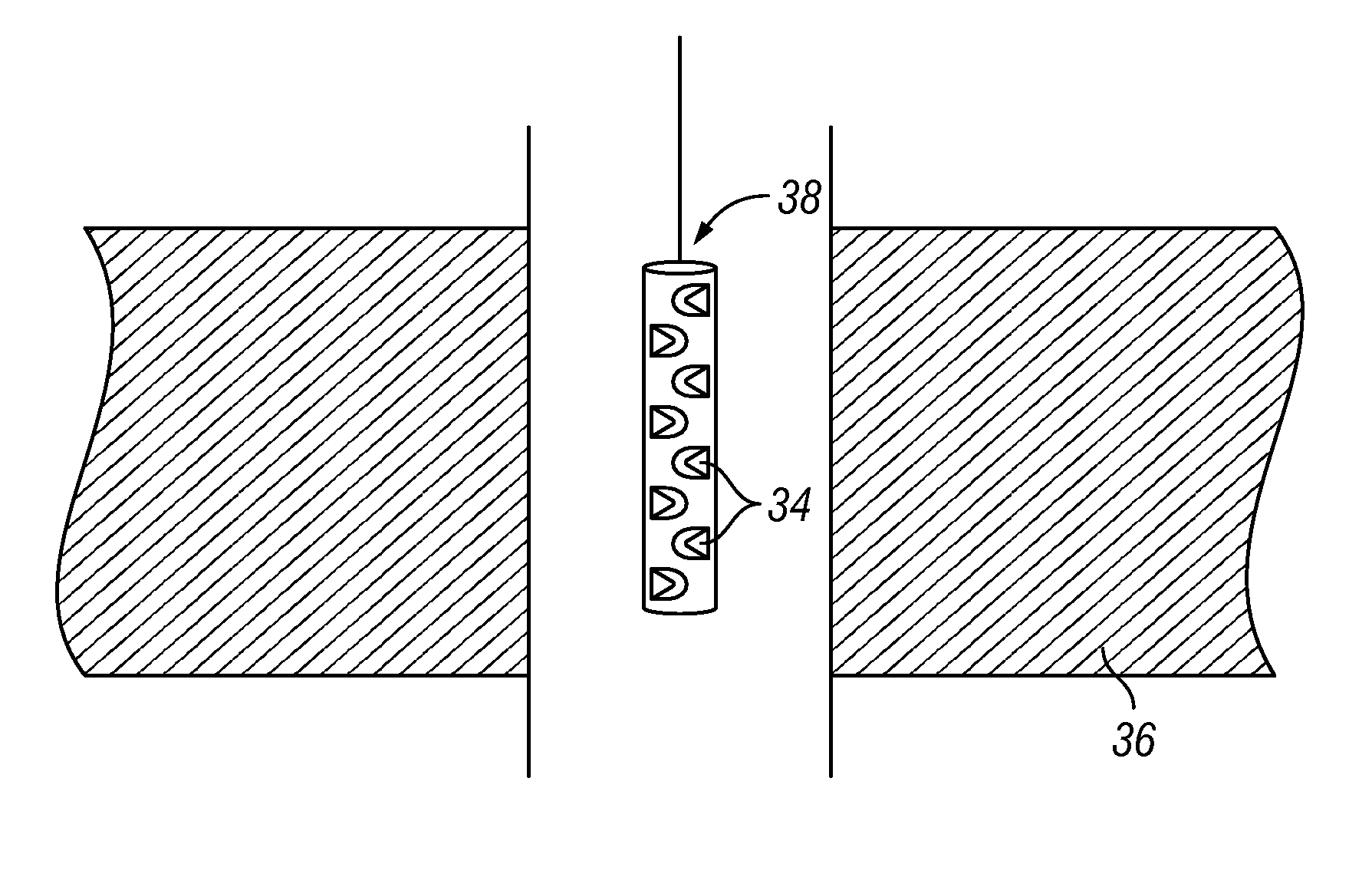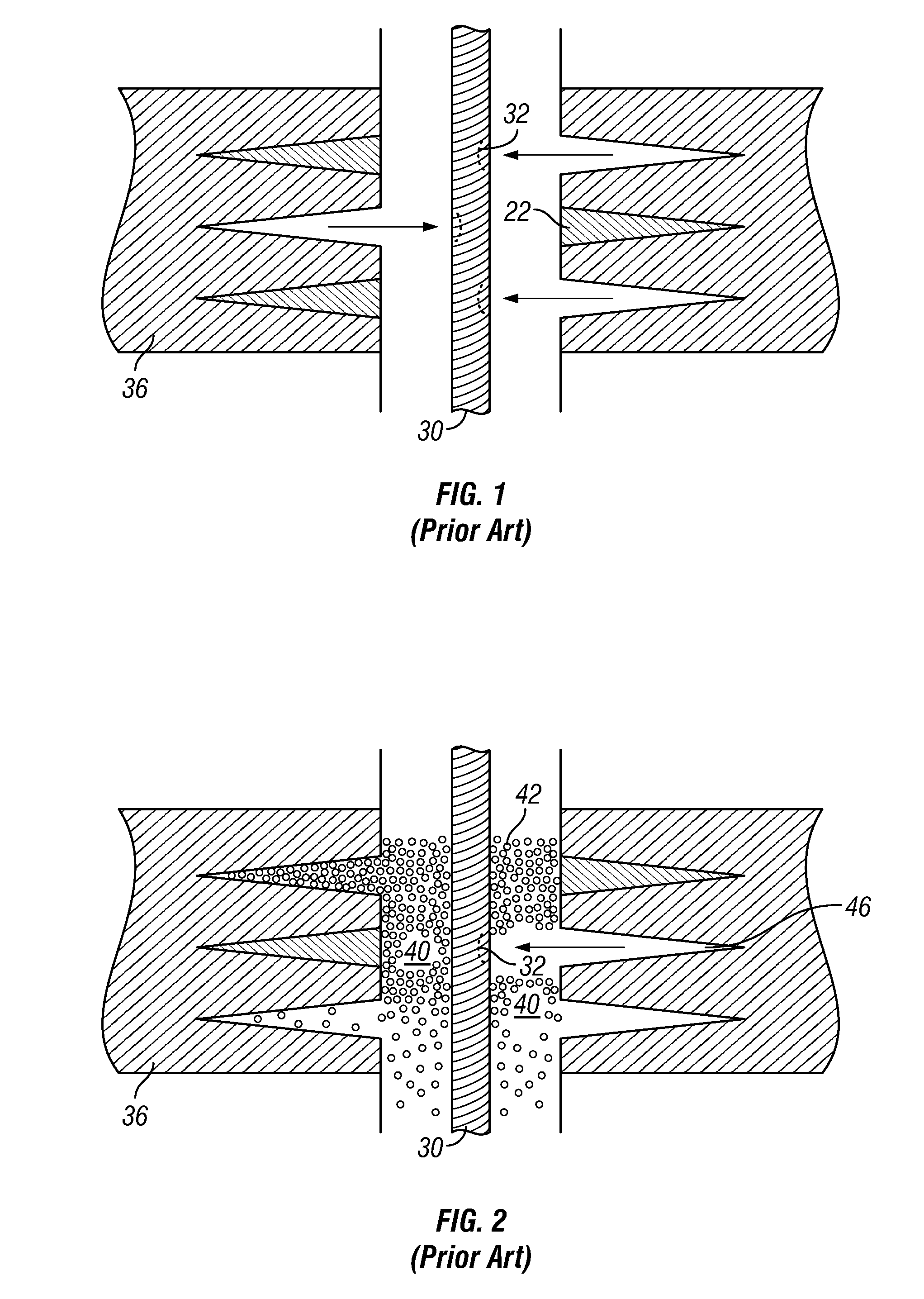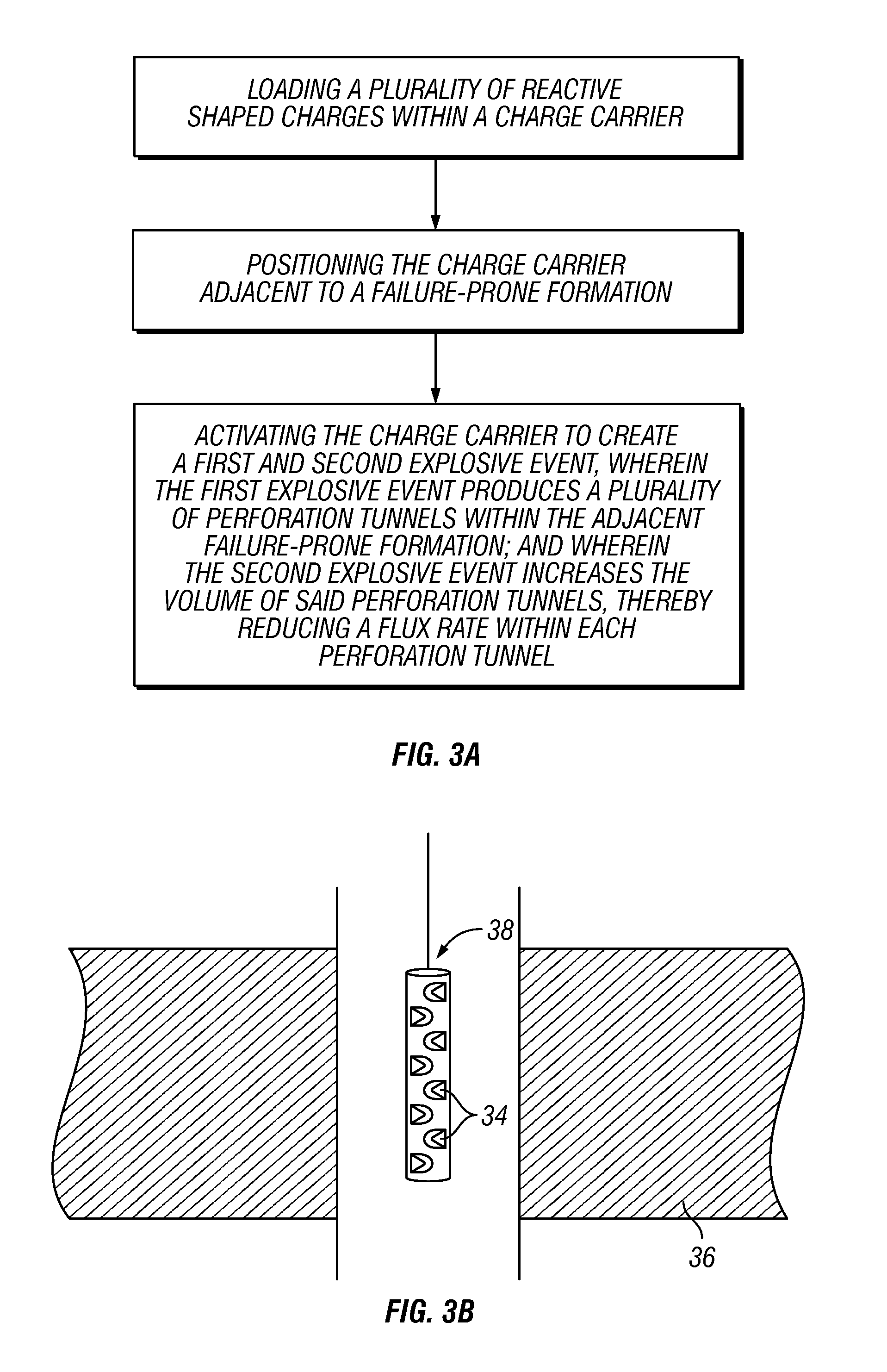Method for perforating failure-prone formations
a technology of perforation and formation, applied in the direction of fluid removal, borehole/well accessories, weapons, etc., can solve the problems of increasing the risk of formation failure, more reliable and less risky, and increasing so as to enhance the installation and longevity of a sand control completion. , the effect of reducing the propensity for sand production
- Summary
- Abstract
- Description
- Claims
- Application Information
AI Technical Summary
Benefits of technology
Problems solved by technology
Method used
Image
Examples
Embodiment Construction
[0021]Current knowledge dictates that due to the poorly consolidated nature of failure prone formations, any additional energy or reactive detonation within a perforation tunnel would cause immediate production of formation and solids material into the wellbore. Therefore, the additional energy released by reactive shaped charges has until now been seen more as a hazard than a benefit, as it should cause immediate failure of the formation into the wellbore. However, it has been found that the use of reactive shaped charges in failure-prone formations reduces the flux rate per perforation and eliminates surge flow steps, thereby reducing the risk of formation failure rather than causing it.
[0022]As used herein, the terms “failure-prone formation,”“poorly consolidated formation,”“sanding-prone formation,” and “sand production prone formation” are used interchangeably and are meant to refer to an unconsolidated subterranean formation and / or loosely consolidated formation wherein the pa...
PUM
 Login to View More
Login to View More Abstract
Description
Claims
Application Information
 Login to View More
Login to View More - R&D
- Intellectual Property
- Life Sciences
- Materials
- Tech Scout
- Unparalleled Data Quality
- Higher Quality Content
- 60% Fewer Hallucinations
Browse by: Latest US Patents, China's latest patents, Technical Efficacy Thesaurus, Application Domain, Technology Topic, Popular Technical Reports.
© 2025 PatSnap. All rights reserved.Legal|Privacy policy|Modern Slavery Act Transparency Statement|Sitemap|About US| Contact US: help@patsnap.com



